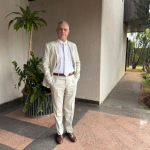Structured funds with securitization guarantees have gained prominence in the capital markets by combining sophisticated fundraising strategies with additional protection mechanisms for investors. This model blends the traditional structure of investment funds with securitization instruments designed to mitigate default risks and enhance the predictability of payment flows. According to expert Rodrigo Balassiano, understanding the concept and structuring of these operations is essential to assess their relevance as an investment alternative in an increasingly competitive and regulated environment.
The Concept of Structured Funds with Securitization Guarantees
Structured funds with securitization guarantees are vehicles that use instruments typical of the securitization market to strengthen the legal and financial security of their operations. In practice, they rely on mechanisms such as overcollateralization, subordinated shares, reserve funds, and surety bonds to reduce risks associated with the acquired receivables. This model seeks to attract investors by offering greater predictability, while also expanding the fundraising capacity of the companies that assign their receivables. According to Rodrigo Balassiano, it is a strategy that balances financial innovation with investor protection.

Structuring and Key Elements
The structuring of structured funds with securitization guarantees involves several stages. First, the assets that will compose the portfolio are selected, usually receivables with homogeneous characteristics and predictable cash flows. Next, the guarantee mechanisms that will enhance the fund’s attractiveness are defined. These include the creation of subordinated shares, which absorb initial losses, and the establishment of liquidity reserves, which are used to cover potential payment delays.
Benefits for Investors and Managers
For investors, structured funds with securitization guarantees provide additional layers of protection, reducing exposure to defaults and increasing the predictability of returns. For managers, the inclusion of securitization guarantees boosts the fund’s appeal, facilitates capital raising, and strengthens market credibility. In addition, the use of these mechanisms allows access to a broader base of investors, including institutional players who prioritize security and transparency in their allocations. According to Rodrigo Balassiano, this combination of benefits reinforces the position of these funds as sophisticated financing instruments.
@rodrigobalassiano1Rodrigo Balassiano Desvenda: O Papel Legal do Administrador na CVM #RodrigoBalassiano #QueméRodrigoBalassiano #OqueaconteceucomRodrigoBalassiano
Challenges in Structuring with Securitization Guarantees
Despite their advantages, structured funds with securitization guarantees also pose significant challenges. Implementing guarantee mechanisms involves additional costs, which can impact the fund’s net returns. Moreover, regulatory complexity requires strict attention to the rules of the Brazilian Securities and Exchange Commission (CVM) and the drafting of detailed contracts. Another challenge lies in the ongoing monitoring of assets and guarantees, which demands independent audits and efficient internal controls. The success of the structure depends on the ability to balance costs and benefits, ensuring both competitiveness and safety.
Growth Outlook
The market for structured funds with securitization guarantees is expected to grow, driven by the search for alternative financing instruments and the emphasis on security in financial operations. The expansion of securitization in Brazil and regulatory maturation create favorable conditions for this model to become increasingly widespread. Investors, in turn, are showing greater receptiveness to funds that offer transparency and clear risk-mitigation mechanisms. The trend is for these structures to consolidate as a standard in the financing of strategic sectors of the economy.
Final Considerations
Structured funds with securitization guarantees represent an advancement in the way investments are structured, combining financial sophistication with investor protection. Their effectiveness depends on well-drafted contracts, strong governance, and strict compliance with regulatory standards. For Rodrigo Balassiano, this model is one of the most promising tools to broaden access to resources, reduce risks, and strengthen confidence in the Brazilian capital markets. By uniting innovation and security, these funds contribute to a more robust and competitive investment environment.
Author: Vania Quimmer





